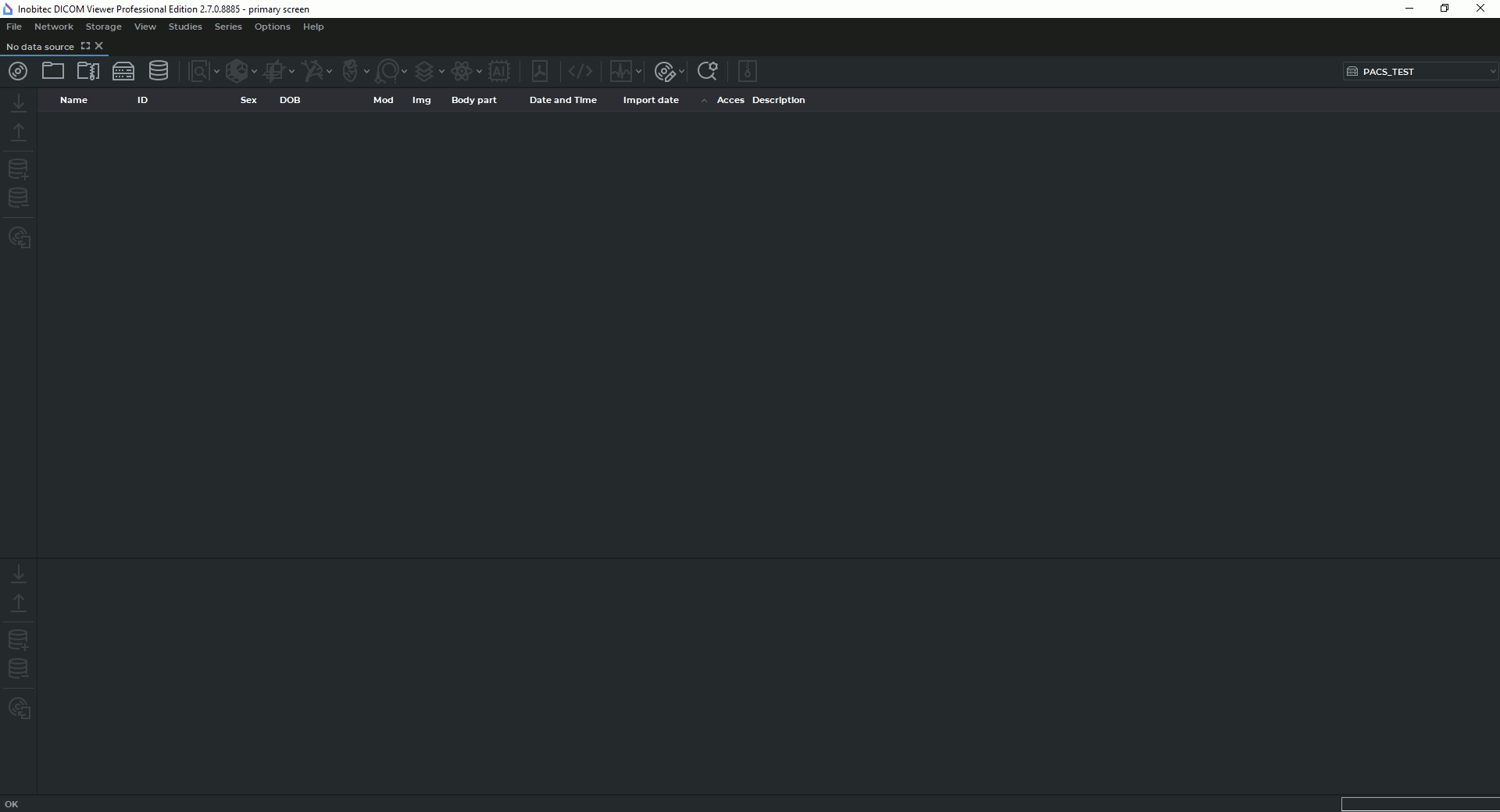Inobitec DICOM Viewer
Chapter 1. Program Window Elements
The main application window looks as follows (Fig. 1.1).
The DICOM Viewer window consists of several elements.
1.1 Main Menu
1.1.1 File
1.1.2 Network
1.1.3 Storage
1.1.4 View
1.1.5 Studies
1.1.6 Series
1.1.7 Options
1.1.8 Help
1.2 Window Management
1.3 Tab Panel
1.3.1 General
1.3.2 Manage a Tab
1.4 Toolbar
1.5 Select Data Source
1.5.1 Select a CD, DVD or Local Folder as the Data Source
1.5.2 Opening Zipped DICOM Studies
1.5.3 Opening DICOM studies by dragging and dropping
1.5.4 Opening DICOM studies from the context menu
1.5.5 Select a PACS Server or Local Storage as the Data Source
1.6 Save Studies and Series to the folder
1.6.1 Save Studies to the folder
1.6.2 Save Series to the folder
1.7 Search Panel
1.7.1 Saving the Search Parameters
1.7.2 Searching for Studies by Preset Parameters
1.8 Select Server Panel
1.9 Study Panel
1.9.1 Customize Study Panel
1.9.2 Sort Studies
1.9.3 Edit Patient Name and Description in a Study
1.9.4 Study List Export
1.10 Series Panel
1.11 Studies and Series Download/Upload Panels
1.12 Information Panel
1.13 Uncompress series
1.14 Tool Control Buttons
1.15 Use of Touch Gestures on Touchscreen Monitors
1.1.1 File
1.1.2 Network
1.1.3 Storage
1.1.4 View
1.1.5 Studies
1.1.6 Series
1.1.7 Options
1.1.8 Help
1.2 Window Management
1.3 Tab Panel
1.3.1 General
1.3.2 Manage a Tab
1.4 Toolbar
1.5 Select Data Source
1.5.1 Select a CD, DVD or Local Folder as the Data Source
1.5.2 Opening Zipped DICOM Studies
1.5.3 Opening DICOM studies by dragging and dropping
1.5.4 Opening DICOM studies from the context menu
1.5.5 Select a PACS Server or Local Storage as the Data Source
1.6 Save Studies and Series to the folder
1.6.1 Save Studies to the folder
1.6.2 Save Series to the folder
1.7 Search Panel
1.7.1 Saving the Search Parameters
1.7.2 Searching for Studies by Preset Parameters
1.8 Select Server Panel
1.9 Study Panel
1.9.1 Customize Study Panel
1.9.2 Sort Studies
1.9.3 Edit Patient Name and Description in a Study
1.9.4 Study List Export
1.10 Series Panel
1.11 Studies and Series Download/Upload Panels
1.12 Information Panel
1.13 Uncompress series
1.14 Tool Control Buttons
1.15 Use of Touch Gestures on Touchscreen Monitors

